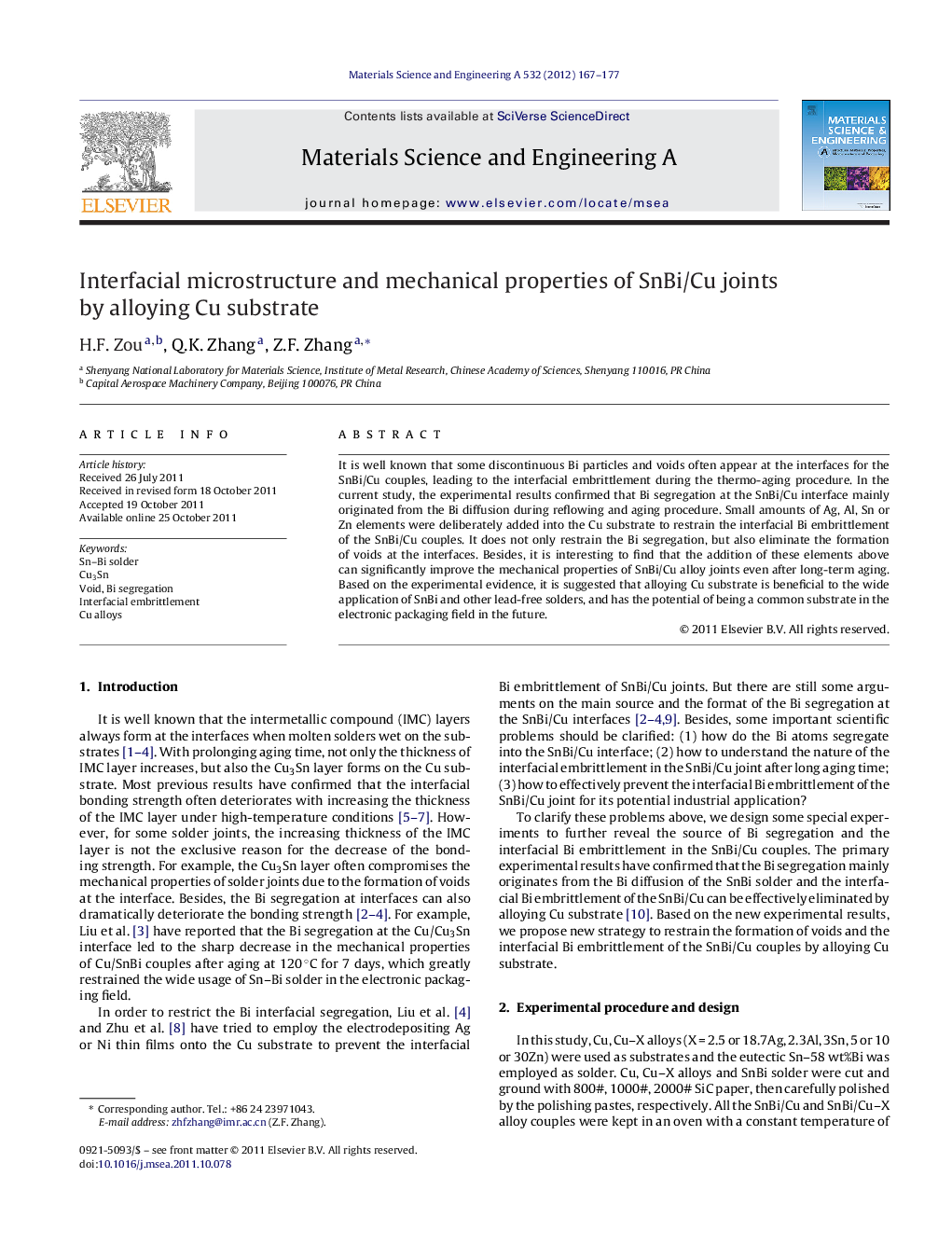| Article ID | Journal | Published Year | Pages | File Type |
|---|---|---|---|---|
| 1577852 | Materials Science and Engineering: A | 2012 | 11 Pages |
Abstract
It is well known that some discontinuous Bi particles and voids often appear at the interfaces for the SnBi/Cu couples, leading to the interfacial embrittlement during the thermo-aging procedure. In the current study, the experimental results confirmed that Bi segregation at the SnBi/Cu interface mainly originated from the Bi diffusion during reflowing and aging procedure. Small amounts of Ag, Al, Sn or Zn elements were deliberately added into the Cu substrate to restrain the interfacial Bi embrittlement of the SnBi/Cu couples. It does not only restrain the Bi segregation, but also eliminate the formation of voids at the interfaces. Besides, it is interesting to find that the addition of these elements above can significantly improve the mechanical properties of SnBi/Cu alloy joints even after long-term aging. Based on the experimental evidence, it is suggested that alloying Cu substrate is beneficial to the wide application of SnBi and other lead-free solders, and has the potential of being a common substrate in the electronic packaging field in the future.
Related Topics
Physical Sciences and Engineering
Materials Science
Materials Science (General)
Authors
H.F. Zou, Q.K. Zhang, Z.F. Zhang,
